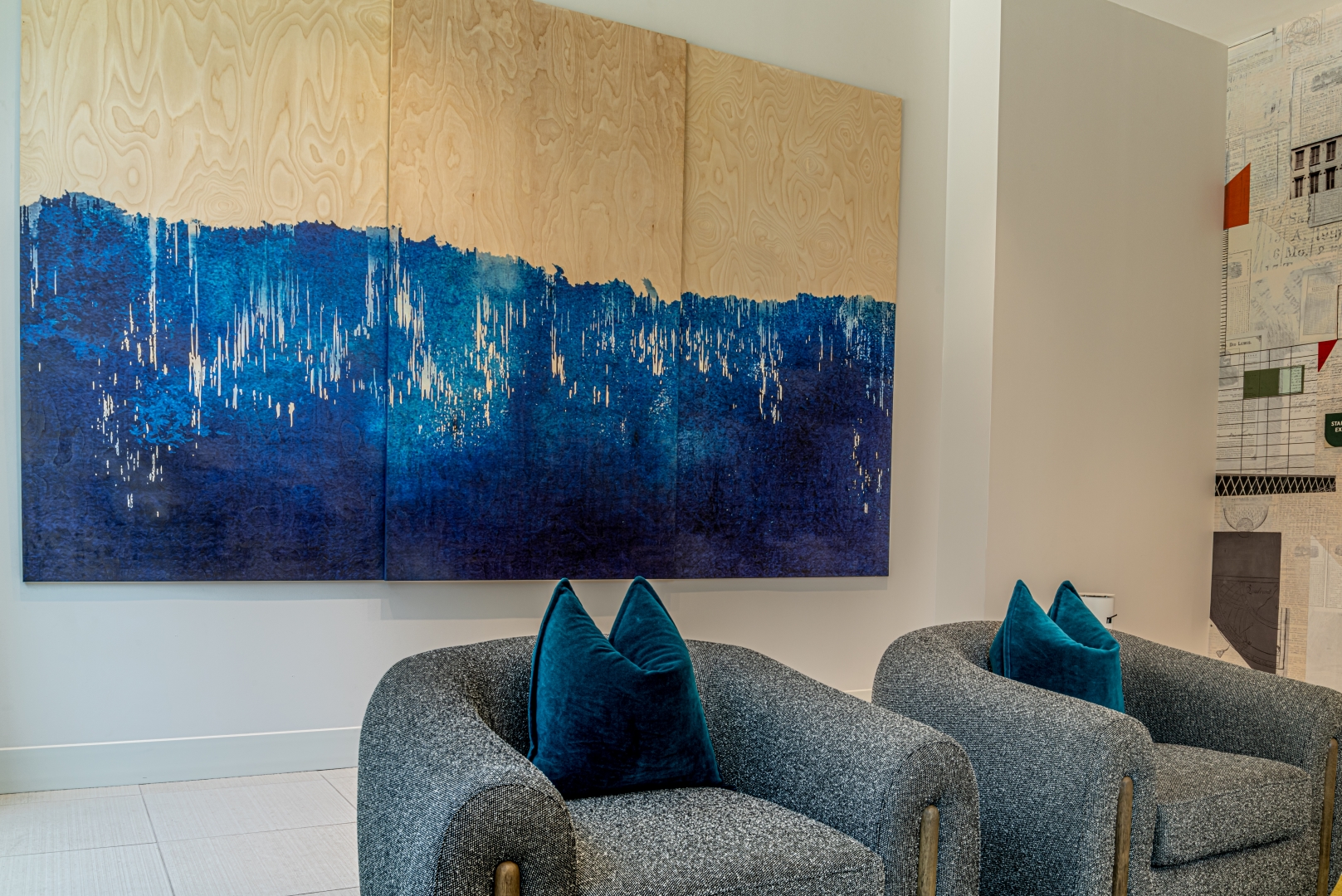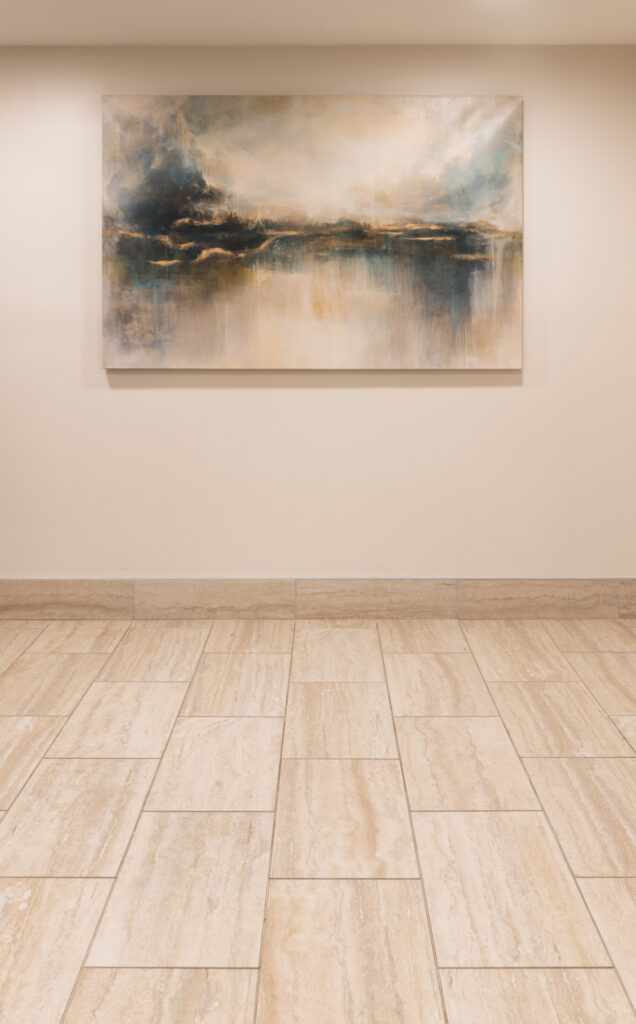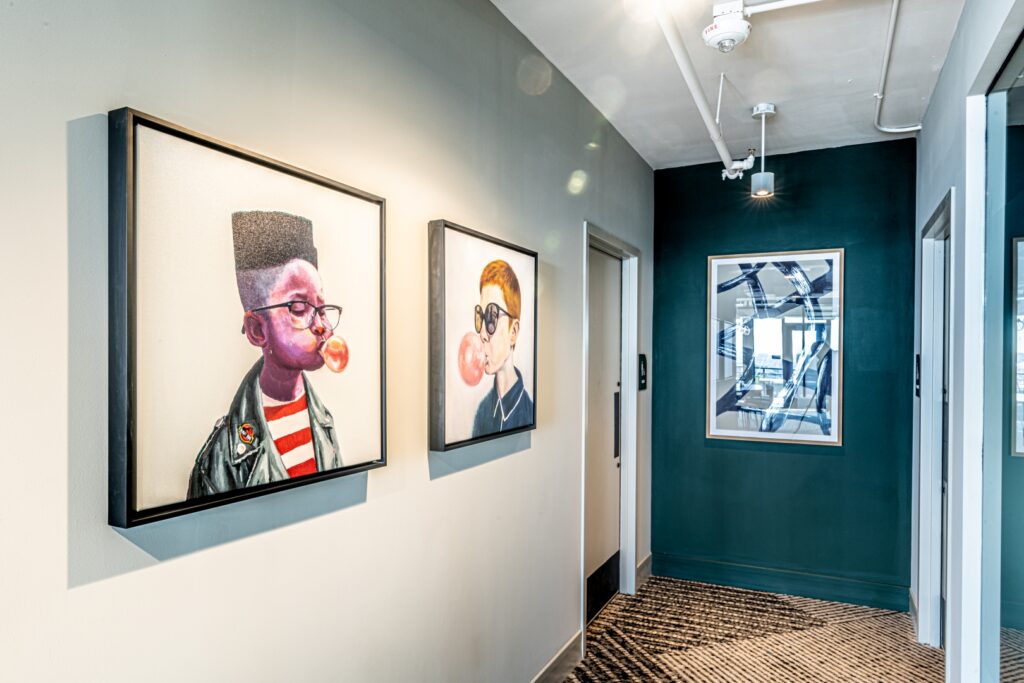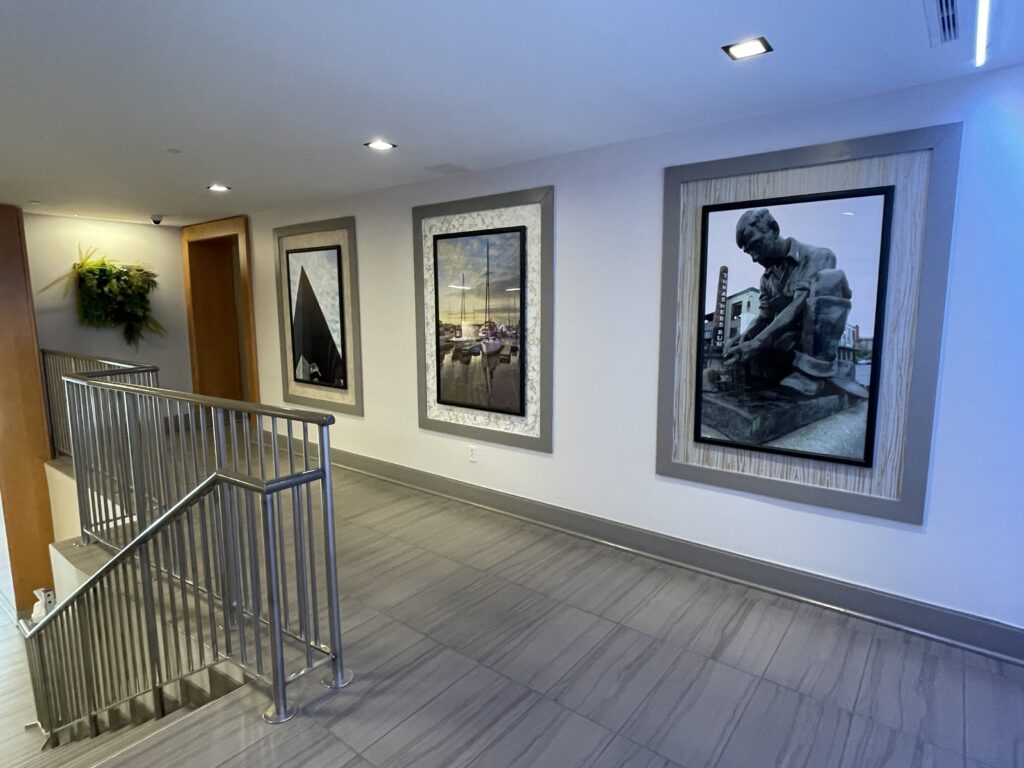
By Jennie Crouch
In the realm of interior design, the impact of artwork transcends mere decoration. When applied thoughtfully, artwork has the power to uplift spirits, evoke memories, and promote a sense of well-being—especially crucial in environments like senior living facilities where creating healing spaces is paramount. Let’s explore how to select artwork that fosters a healing environment specifically tailored for seniors.
Understanding the Healing Power of Art
Art has long been recognized for its therapeutic benefits. For seniors, whose emotional and physical well-being can be particularly sensitive, carefully curated artwork can provide a sense of comfort, familiarity, and stimulation. Studies have shown that art can reduce stress, alleviate feelings of isolation, and even aid in cognitive function, making it a crucial element in senior care settings.

Consider the Sensory Experience
When choosing artwork for senior living facilities, it’s important to consider the sensory experience it creates. Opt for pieces that appeal to multiple senses—sight, touch, and even sound. Textured artwork, such as sculptures or pieces with tactile elements, can engage seniors in a more interactive way, providing both visual and tactile stimulation. Additionally, consider the auditory impact; soft, calming music or the gentle flow of a fountain near artwork can enhance the overall healing environment.

Themes and Imagery
The choice of themes and imagery in artwork can profoundly influence the emotional atmosphere of a space. For seniors, nostalgic themes that evoke positive memories—such as landscapes reminiscent of their youth, classic paintings, or cultural scenes—can promote a sense of connection to the past. Nature-themed artwork, especially tranquil landscapes or botanical prints, can have a calming effect and bring the outdoors inside, which is beneficial for mental well-being.

Practical Considerations
In senior living facilities, practical considerations are as important as aesthetic ones. Opt for artwork that is easy to maintain and clean. Avoid fragile or delicate pieces that could pose a safety risk. Artwork should also be placed at eye level to ensure it is easily visible and accessible, taking into account the mobility and comfort of residents.
Collaborate with Residents and Caregivers
Engage residents and caregivers in the selection process to ensure that the chosen artwork resonates with those who will be living and working in the space. Solicit their input on preferred themes, colors, and styles. This collaborative approach not only enhances the personal connection residents feel with their surroundings but also ensures that the artwork contributes positively to their daily lives.

Conclusion
In senior living facilities, the role of artwork extends beyond aesthetics—it becomes a crucial component of a healing environment that supports emotional, mental, and physical well-being. By carefully selecting artwork that is both visually appealing and emotionally enriching, interior designers can create spaces that promote healing, comfort, and a sense of belonging for seniors. Through thoughtful consideration of themes, sensory appeal, and practicality, artwork can transform senior living environments into places of solace and inspiration.
As designers and caregivers continue to explore innovative ways to enhance senior living environments, integrating healing artwork will undoubtedly remain a cornerstone of creating spaces that nurture the mind, body, and spirit.
Jennie Crouch is the Vice President of SR/A